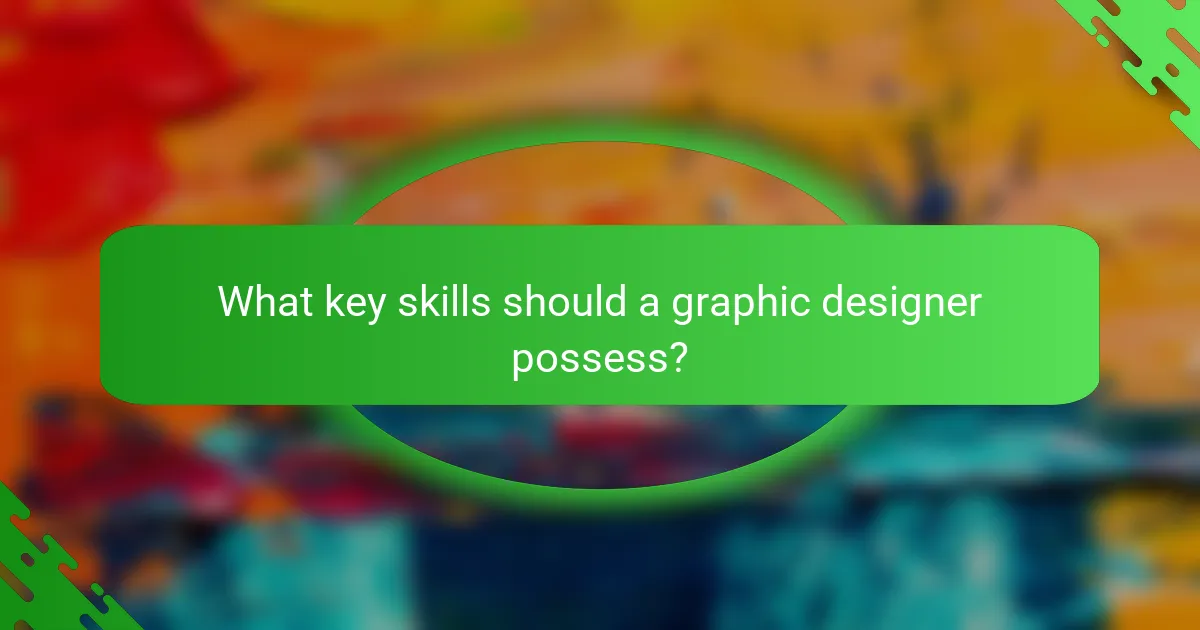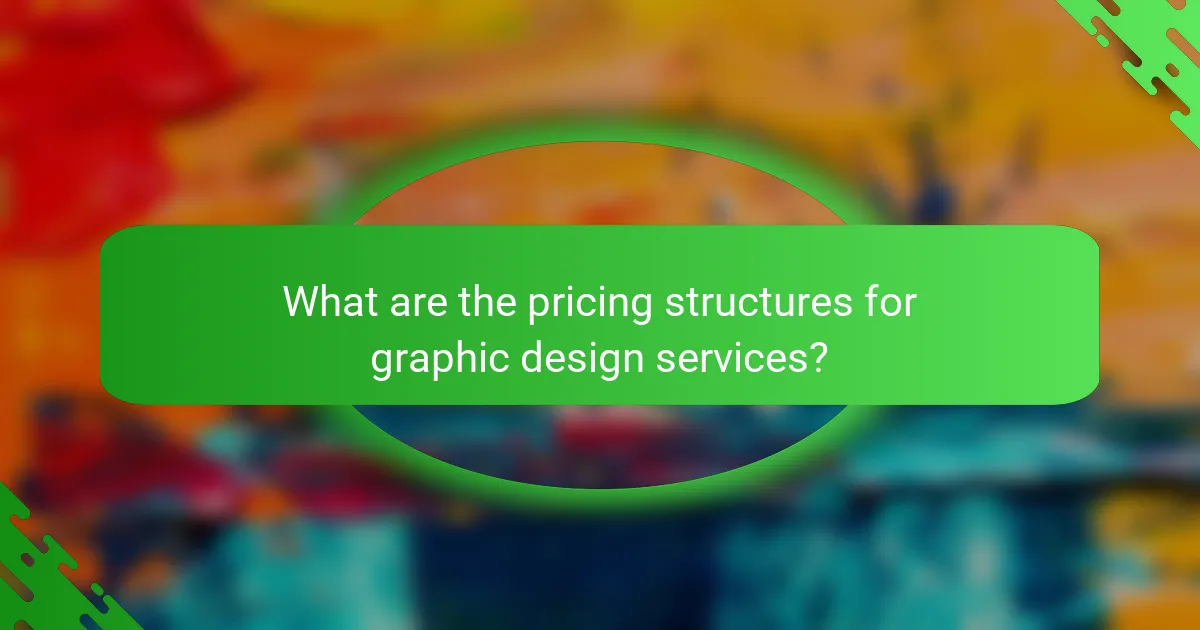Choosing the right graphic designer is crucial for achieving your desired visual outcomes. It’s essential to evaluate their portfolio, client feedback, and relevant experience to ensure they align with your specific needs. Additionally, a successful designer should possess a mix of technical skills and creative flair, enabling them to deliver effective and appealing designs across various platforms.

How to choose the right graphic designer in major US cities?
Choosing the right graphic designer in major US cities involves assessing their style, quality, and experience to ensure they meet your specific needs. Focus on their portfolio, client feedback, and industry experience to make an informed decision.
Evaluate portfolios for style and quality
When evaluating a designer’s portfolio, look for a consistent style that aligns with your brand’s identity. Check for the quality of work, including attention to detail, creativity, and how well the designs communicate the intended message.
Consider the variety of projects showcased. A diverse portfolio indicates versatility, while a focused one may suggest specialization. Aim for designers who have experience in projects similar to yours, whether it’s branding, web design, or print materials.
Check client testimonials and reviews
Client testimonials and reviews provide insight into a designer’s reliability and professionalism. Look for feedback that highlights their communication skills, ability to meet deadlines, and responsiveness to client needs.
Websites like Clutch or Behance can be useful for finding reviews. Pay attention to recurring themes in the feedback, as they can reveal strengths or weaknesses that may affect your project.
Assess experience in relevant industries
Experience in your specific industry can greatly enhance a designer’s effectiveness. Designers familiar with your sector will understand its nuances, trends, and audience preferences, leading to more tailored solutions.
Ask potential designers about their past projects in your industry. This can include case studies or examples that demonstrate their understanding of your market. A designer with relevant experience is more likely to deliver results that resonate with your target audience.

What key skills should a graphic designer possess?
A graphic designer should possess a blend of technical and creative skills that enable them to produce visually appealing and effective designs. Key skills include proficiency in design software, a strong understanding of typography and color theory, and the ability to create responsive designs that work across various platforms.
Proficiency in design software like Adobe Creative Suite
Proficiency in design software is essential for any graphic designer. Tools like Adobe Photoshop, Illustrator, and InDesign are industry standards that allow designers to create and manipulate graphics effectively. Familiarity with these programs enables designers to execute their creative visions and meet client specifications efficiently.
When assessing a designer’s software skills, consider their portfolio. Look for examples that demonstrate their ability to use these tools creatively and effectively. A designer who can showcase a range of projects using different software is likely to be versatile and adaptable.
Strong understanding of typography and color theory
A strong understanding of typography and color theory is crucial for creating visually appealing designs. Typography involves selecting appropriate fonts and arranging text in a way that enhances readability and aesthetic appeal. Color theory helps designers choose color palettes that evoke the desired emotions and convey the right messages.
When evaluating a designer’s grasp of these concepts, review their past work for effective use of font combinations and color schemes. A good designer will be able to explain their choices and how they contribute to the overall design goals.
Ability to create responsive designs
The ability to create responsive designs is increasingly important in today’s digital landscape. Responsive design ensures that graphics and layouts adapt seamlessly to various screen sizes and devices, providing an optimal user experience. This skill is particularly vital for web and mobile applications.
To assess a designer’s capability in this area, inquire about their experience with responsive design principles and tools. Look for projects that demonstrate their ability to create designs that function well on desktops, tablets, and smartphones, ensuring accessibility and usability across platforms.

What experience levels should you consider?
When choosing a graphic designer, consider their experience level as it directly impacts the quality and cost of their work. Designers typically fall into three categories: junior, mid-level, and senior, each offering different advantages and price points.
Junior designers for budget-friendly options
Junior designers are often recent graduates or those with limited professional experience. They can provide cost-effective solutions, typically charging lower rates, which makes them appealing for startups or small projects.
However, while they may bring fresh ideas and enthusiasm, their lack of experience can lead to longer project timelines and a steeper learning curve. It’s essential to provide clear guidance and feedback to maximize their potential.
Mid-level designers for balanced cost and expertise
Mid-level designers usually have several years of experience and a solid portfolio. They strike a balance between cost and skill, making them suitable for projects that require a higher level of expertise without the premium price of senior designers.
These designers can handle more complex tasks and often work more efficiently than juniors. Look for mid-level designers who have experience relevant to your specific industry to ensure they understand your needs and audience.
Senior designers for high-stakes projects
Senior designers possess extensive experience and a robust portfolio, often specializing in specific areas such as branding or user experience. They are ideal for high-stakes projects where quality and strategic insight are paramount.
While their rates are higher, investing in a senior designer can lead to superior results and a smoother process. They can provide valuable guidance and innovative solutions, making them worth the expense for critical initiatives.

What questions should you ask during the selection process?
Asking the right questions during the selection process can help you identify a graphic designer who aligns with your project needs and vision. Focus on their design process, past work, and how they manage client feedback to ensure a successful collaboration.
What is your design process?
Understanding a designer’s process is crucial for assessing how they approach projects. Inquire about the steps they take from concept to completion, including research, brainstorming, and revisions. A clear process often indicates professionalism and efficiency.
Look for designers who outline their methodology, such as initial sketches, digital drafts, and final approvals. This transparency can help you gauge how well they might fit into your workflow and timelines.
Can you provide case studies of past work?
Requesting case studies allows you to evaluate a designer’s experience and style. A good designer should be able to share specific examples that highlight their skills and the results achieved for previous clients. This can include metrics like increased engagement or sales, if applicable.
Examine the diversity of their portfolio to see if they have worked on projects similar to yours. Look for variety in design styles and industries to ensure they can adapt to your specific needs.
How do you handle client feedback?
Understanding how a designer incorporates client feedback is essential for a successful partnership. Ask them to describe their approach to receiving and implementing feedback, including how they manage differing opinions and revisions.
Effective designers should demonstrate flexibility and a willingness to collaborate. Look for those who have a structured process for feedback, such as scheduled review sessions, which can help keep the project on track and aligned with your vision.

What are the pricing structures for graphic design services?
Graphic design services typically use two main pricing structures: hourly rates and project-based pricing. Understanding these options helps clients choose the best fit for their budget and project needs.
Hourly rates vs. project-based pricing
Hourly rates charge clients based on the time the designer spends on a project, which can range from low tens to high hundreds of USD per hour, depending on the designer’s experience and expertise. This structure is beneficial for projects with uncertain scopes, as clients pay for the actual time spent.
Project-based pricing, on the other hand, involves a fixed fee for the entire project, which can provide clarity on costs upfront. This method is ideal for well-defined projects, as it allows clients to budget effectively without worrying about unexpected hours.
Average costs in New York and Los Angeles
In New York, graphic design services can range from approximately $75 to $200 per hour, with project-based fees often falling between $1,500 to $10,000 depending on the complexity. Los Angeles generally sees similar rates, with hourly charges around $70 to $180 and project costs typically ranging from $1,200 to $9,000.
When selecting a designer in either city, consider the designer’s portfolio and client reviews to ensure their style aligns with your vision. Additionally, be aware that costs may vary based on the designer’s reputation and the specific services required, such as branding or digital design.



